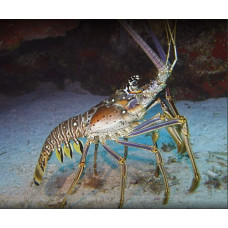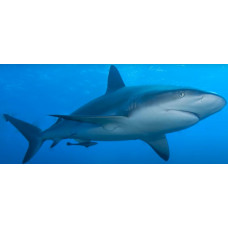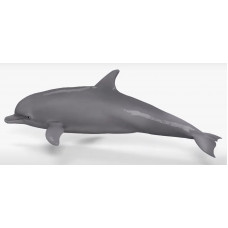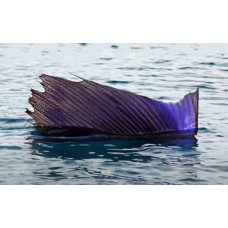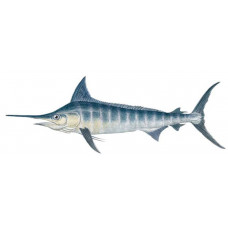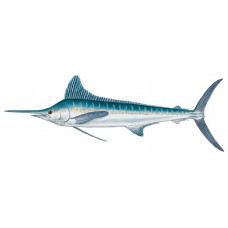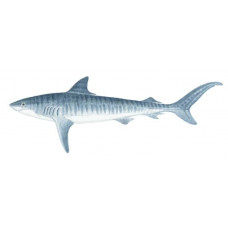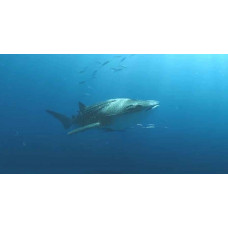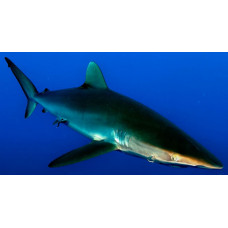Fauna of the Caribbean Sea
The Caribbean Sea area belongs to the Caribbean region according to the faunal zonation. The region has a high biodiversity, with many species being endemic. The marine fauna of the region is derived from representatives of the Indian and Pacific Oceans, which entered the Caribbean Sea before the formation of the Isthmus of Panama about 4 million years ago.

Common fish of the Caribbean Sea
The Caribbean is home to some 450 species of fish, including flying fish, giant oceanic manta rays, Acanthurus bahianus, Pomacanthus, spotfin butterflyfish (Chaetodon ocellatus), parrotfish, Atlantic goliath grouper (Epinephelus itajara), tarpon and muraena. Throughout the Caribbean there are commercial catches of achelata, sardine (off the Yucatan Peninsula) and some species of tuna. Bonefish, barracuda, marlin and wahoo are popular with sport fishermen.
Sharks of the Caribbean
The bull shark, tiger shark, silky shark and Caribbean reef shark are all found in the Caribbean.
Mammals of the Caribbean Sea
There are 90 species of mammals in the Caribbean, including sperm whales, humpback whales and oceanic dolphins. Pinnipeds and the West Indian manatee are found off the island of Jamaica. The Caribbean monk seal, which once lived in the region, is thought to be extinct.
Reptiles of the Caribbean
The reptiles of the Caribbean are represented by 500 species (94% endemic). Several endemic species of Cyclura inhabit the islands, and the American crocodile is widespread. Several species of sea turtles are represented in the region: Trichechea spp. Loggerhead (Caretta caretta), Green, Hawksbill, Leatherback, Kemp's Ridley (Lepidochelys kempii) and Olive Ridley (Lepidochelys olivacea).
Amphibians of the Caribbean
All 170 amphibian species in the region are endemic. The habitats of almost all members of the True Toad, Poison Dart Frog, Hylidae and Leptodactylidae families are restricted to one island.
Caribbean corals
The Atlantic Ocean contains about 9% of the world's coral reefs. They cover an area of 50,000 km², most of it off the Caribbean islands. Scleractinian corals are the most common.
Achelata
Achelata are members of the Decapoda order of crayfish (Decapoda). The body length is up to 60 cm. T..
Barracuda, Great
Latin name Sphyraena barracuda Other names Сuda, sea pike, giant sea pike; French: barracuda, bro..
Caribbean reef shark
Latin nameCarcharhinus pereziOther namesCarcharhinus pereziIdentificationThey have a strong, spindle..
Common bottlenose dolphin
Latin nameTursiops truncatusOther namesAtlantic bottlenose dolphinIdentificationThe moderately devel..
Flying fishes
Flying fish (Exocoetidae) is a family of Beloniformes. It has 8 genera, about 50 species. Body lengt..
Grouper, Goliath
Latin name Epinephelus itajara Other names Jewfish, spotted jewfish, southern jewfish, junefish, ..
Marlin
Marlin (Istiophoridae) is a family of fishes of the order Perciformes. 3 genera - Istiophorus, Makai..
Marlin, Blue
Latin name Makaira nigricans and Makaira mazara Other names Atlantic blue marlin, Pacific blue ma..
Marlin, Striped
Latin name Tetrapturus audax Other names Striper, marlin, Pacific marlin, Pacific striped marlin,..
Marlin, White
Latin name Tetrapturus albidus Other names Spikefish, Atlantic white marlin; French: espadon; Ita..
Ocean surgeon
Latin nameAcanthurus bahianusOther namesOcean surgeonfish, Acanthurus bahianusIdentificationKnown fo..
Shark, Bull
Latin name Carcharhinus leucas Other names Freshwater whaler, river whaler. Identification The ..
Shark, Tiger
Latin name Galeocerdo cuvier Other names Tiger shark Identification Dark bluish-gray or brownis..
Sharks
Identification Like all fish, sharks are vertebrates, but ichthyologists separate them from most bo..
Silky shark
Latin nameCarcharhinus falciformisOther namesBlackspot shark, gray whaler shark, olive shark, ridgeb..

